Raising the bar thro’ technology, innovation and pleasant end-to-end travel experience
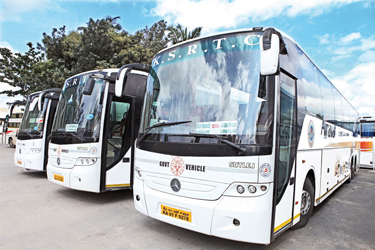
Alighting from the train at the main station of the garden city B’lore during the early morning hours has its own charm. The cool breeze wafting prayers and hymns welcomes the travellers, envelops and imparts a pleasant thermal shock making them scramble for warm clothing, shawl, muffler et. al.; and should one come across some gentle showers, the temperatures can dip even further, a welcome development for those travelling from regions that typically have sweltering heat and humid climate for most part of the year. What strikes as you come out and look beyond the passenger crowd and maze of autos and taxis is a big stadium like structure brightly lit up. Approaching closer you will find it to be a beehive of activities, people scurrying amidst varied buses moving in and out- yes, it’s the impressive and important Kempegowda bus station also popularly referred as Majestic bus station that has become one of the nerve centres for the commuting public. Multitude of buses starting from this location transport passengers to various parts of the city, State and to other State cities and towns. One of India’s largest, high profile and profitable transport organisations, Karnataka State Road Transport Corporation (KSRTC) shares this important bus station with its sister corporation Bangalore Metropolitan Transport Corporation (BMTC); and coming under KSRTC transport jurisdiction is the southern Karnataka excluding B’lore city and including various locations inside the state and outside it extending from Kerala to Maharashtra.
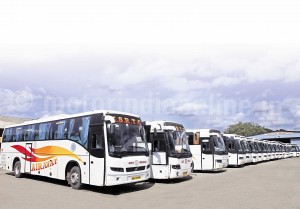
KSRTC has been a profit making organisation for the past 10 yrs and after effecting the restructuring exercise of the organisational set-up. Mr. N. Manjunatha Prasad, IAS, Managing Director, briefing on the evolutionary process of the organisation, says: “KSRTC which covered Karnataka and other places since 1960 went thru’ a restructuring process during late 1990s. Under the same, North West Karnataka RTC (NWKRTC) with Hubli as Headquarters, North East Karnataka RTC (NEKRTC) with Gulbarga as Headquarters and Bangalore Metropolitan Transport Corporation were formed; KSRTC with Bangalore Headquarters started covering south Karnataka apart from operating intercity/inter-State buses while BMTC focussed on transportation needs in Bangalore city. From a loss-making organisation with aging fleet, we have restructured the organisation with radical changes embracing technology, IT and current management practices. We would like to accelerate this upgradation and modernisation process while adhering to the basic objective of providing adequate, efficient, economic and properly co-ordinated transport services”. As regards the working association with its sister corporations, Mr. Channabasappa, Chief Manager – Marketing & Commuter relations indicates that all the 4 Corporations operate independently, have the board members and MD at the helm. MDs of Corporations are board members in others and all of them come under state transport ministry. KSRTC being the parent organisation provides the policy frame work and manages all the officer cadres of the corporations.
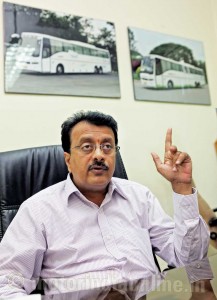
KSRTC has a fleet strength of about 8300 buses covering daily about 27 lakh kms; and procures 1000-1500 vehicles every year. The economy range and upwards till luxury class are dominated by Tata and Ashok and Leyland having about 5000 and 2200 buses respectively. In the high-end premium class Volvo, Corona and Mercedes are present. Volvo has a strong presence with a fleet of around 500 vehicles including the multi-axle (3 axle) version and had supplied its first bus to KSRTC; and the corporation has the largest fleet of Volvo amongst all other STUs. Mercedes’ entry has been in recent times and they have supplied about 30 buses including the multi-axle version. At the current juncture only Volvo and Mercedes are present in the multi-axle segment; and Scania having entered the Indian market recently is expected to give its trial run bus to KSRTC for evaluations and stake its claim for being part of the fleet in the premium domain.
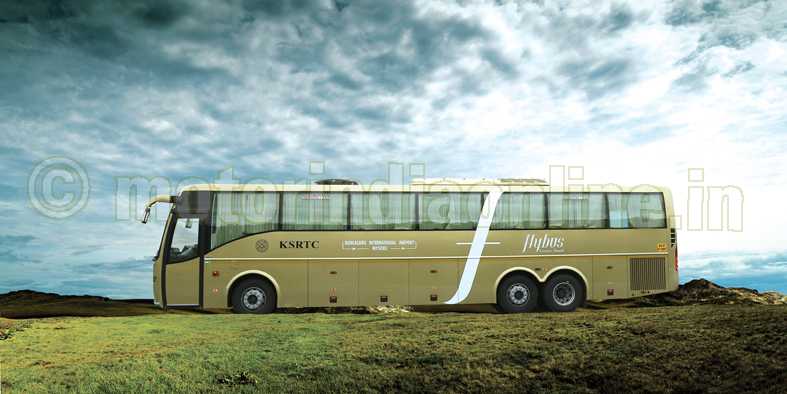
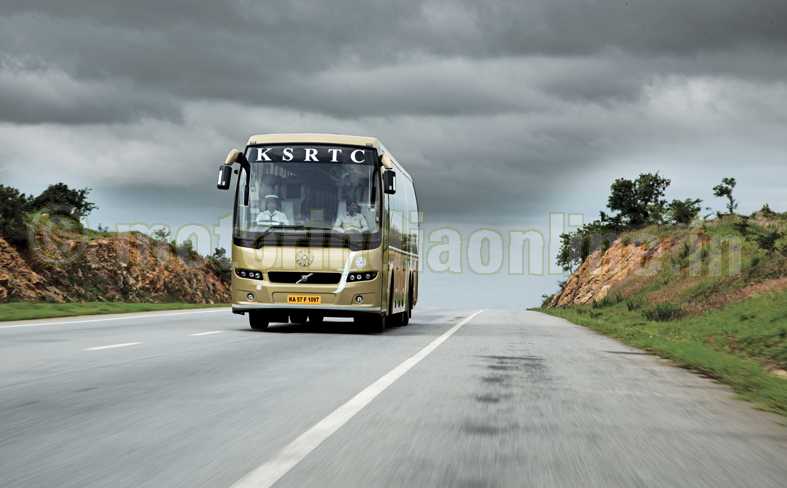
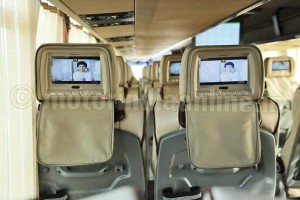
KSRTC for its operations has 15 divisions, 77 depots, 145 bus stations and 3 training institutions; transports about 26 lakh passengers per day thro’ 7700 schedules and covers 94 crore kms per year; has staff strength of 37,800 and clocks about Rs. 7 crores daily revenue. As regards fleet, average age of vehicles in lakh km is 4.88 and average age of vehicles in years 3.72. In the initial stages KSRTC had been operating the economy category red buses with semi-deluxe and deluxe in the higher range. However this underwent a major change after their market segmentation exercise. Various brands were introduced with fleet modernisation some being Rajahamsa, Vaibhav, Karnataka Saarige, Ambari and
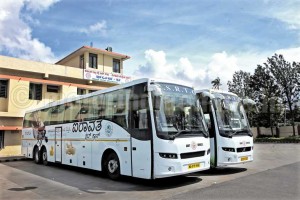
Airavat. The Airavat brand name was affixed for Volvo buses to differentiate it from others running in the market; in this premium segment, apart from the default comfortable reclining seats, air suspension and A.C. ambience, blankets and drinking water are also provided; and the drivers trained in soft skills to ensure that comfort feeling and connect to customers. M-ticket, bus arrival/departure, bus no., conductor name and his contact no. are sent thro’ sms apart from providing add-on facilities like pantry, chemical toilet, individual TV for each seat with 70 channel entertainment and Wi-Fi in the select premium segment. Airavat
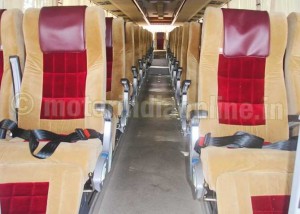
Club class, Airavat Bliss, Airavat Superia and Flybus were introduced with combination of above facilities depending upon the class gradation. Continuing to improve upon the above, KSRTC also employs external agencies to identify the profitable routes and suggest ways to improve on various fronts – both on the operations and marketing fronts.
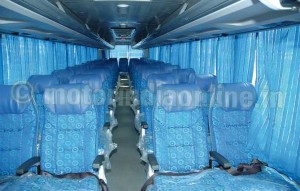
“Professional help from the market leader Ogilvy and Mather was sought to design the complete bus interiors and exteriors; in the
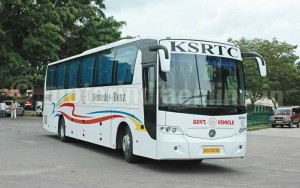
Airavat Club class, to convey the message ‘sleep like a child’, child sleeping in a seat made to look like a perambulator was prominently painted on the exterior side. This attracted the attention of many passersby in various places producing that ‘wow factor’. Airavat Bliss and Airavat Superia too have interesting design patterns depicted to make the vehicles standout and the recently launched Flybus has also brought in many accolades. Flybus launched on 14th Aug. 2013 is a novel concept directly linking the air passengers planning their travel to Bangalore and Mysore. They can now directly book the travel to Mysore along with their flight ticket and Flybus will transport them from Bangalore international airport (BIAL) to Mysore. The bus in the high end of the premium segment ensures facilities comparable to the aircraft; and has on board Wi-Fi facility for connectivity. Travel time is around 4 hrs and KSRTC aims to corner portion of business from SUV taxis – with the comfort level, safety and ease in booking, the service has been a hit. KSRTC is now planning to introduce such Flybus services again from BIAL to Mangalore and Coimbatore. Also they are talking to various other airlines to aggregate the passengers and extend the services to all of them – yes the service is open to other passengers and travelling public too”, briefs Mr. Channabasappa.
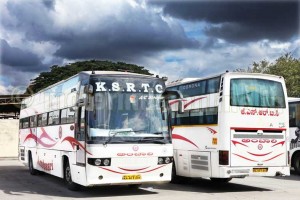
KSRTC has utilised IT and digital marketing to favourably position its services to the wide spectrum of passengers all over India and abroad planning their travel. Apart from providing varied bus stands with a neat ambience, good rest rooms and food stalls, the modern bus stations and intermodal transit centres have been built in sync with the management slogan that ‘new facility created should be the best building and a landmark construction in the town’ – and every passenger utilising KSRTC’s facilities and experiencing the paradigm shift is bound to vouch for this claim. The organisation’s strength to score over competition vis-a-vis private segment and other STUs has been in providing passengers a satisfying and enjoyable end to end experience, viz., right from booking the tickets to utilising varied services in the transport chain and reaching the destination.
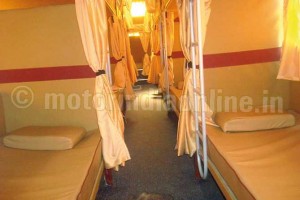
In recognition of its impressive services and exemplary performance KSRTC has received several awards from various organisations and Govt. institutions like the prestigious Rajiv Gandhi Quality Award (for total management practices), Apollo CV Award (best public fleet operator-for ITS introduction), Golden Peacock Award (innovative product/service) to cite a few from the long list. As regards future plans, Mr. Manjunatha Prasad summarises: “Our vision is to offer a safe, punctual, economical and environmentally friendly transportation to commuters. Mission is to continuously improve our services through the employment of innovative technologies, value based and cost effective services”. With its world-class fleet, professional team, increasingly IT enabled work culture and modern management practices, we should see KSRTC scale even greater heights and usher in a new era of vibrant growth to Karnataka’s public transportation system.
Interview with Mr. N. Manjunatha Prasad, Managing Director, KSRTC
KSRTC is an STU having 16 directors on the board with 1 invitee director. All directors are appointed by the State Govt. and its current MD is Mr. N. Manjunatha Prasad, IAS. Read on for the excerpts from an interesting and exclusive interaction with him.
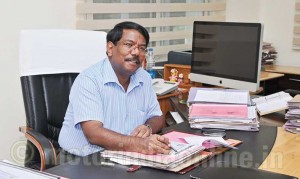
Can you brief us the important factors and USPs for the successful performance of KSRTC and its popularity amidst the commuters?
Innovation, commitment, technology facilitated superior transportation infrastructure, and best practices in work place are some of the main factors that have propelled KSRTC to the current position. We are the 4th largest State Transport Undertaking (STU), a profit making organisation with an accumulated profit of Rs. 64 crores and chalking out ambitious growth plans to take the transportation standards to a higher plane.
KSRTC has always been acknowledged the trendsetter- can you brief us how you have leveraged technology and innovation in achieving the leadership status?
Fleet modernisation, strengthening of infrastructure, revenue mobilisation measures, extensive use of IT in improving systems and procedures have helped the organisation to turn around and become a trendsetter. Today we have about 8300 buses covering various regions and have the largest fleet of premium buses amongst all STUs and cater to the customer requirements at all levels and to their expectations.
KSRTC is the first and leading State Transport Undertaking in the country to adopt Information Technology in its administrative and operational processes. KSRTC is the First STU in India to implement web-based Passenger Seat Reservation System, IT-based Recruitment System, deploy Electronic Ticketing Machines on all of its routes, to have totally computerized Driving tracks for testing the candidates, etc., KSRTC has recently implemented ITS at Mysore City covering entire fleet of city buses. This demonstrative project comprises of Passenger Information System, Vehicle Tracking System, Enterprise Management System and MIS reports. The response of the public is overwhelming since this solution encourages use of public transport and reduces the use of personal vehicles. This significantly contributes to saving the environment from heavy vehicle pollution and reducing congestion on city roads. Based on the response of the public, KSRTC is now implementing Vehicle tracking and monitoring system covering 4000 buses and has plans to scale the project to cover its entire fleet.
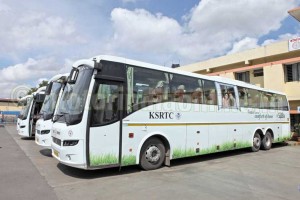
What are the measures taken to induct, train and retain the drivers in your fleet? With the driver shortage looming large, how do you plan to address this issue?
Driver selection is thro’ automated electronic driving test system that is transparent, objective and quick; eliminates discrimination and external influencing factors. This ensures that good drivers get inducted and furthermore they are given periodic training and put thro’ refresher courses for updating their knowledge and skill and for the same developed training centres at B’lore, Mysore and Hassan. We have congenial working conditions, welfare programs and miscellaneous incentives to retain the talent. Yes, we are aware of the likely driver shortage scenario and as part of CSR started construction of a driver training school at Malavalli and one more is coming up in Kolar. The school is open to all the candidates who meet the basic admission criteria. However to enter into KSRTC, they would have to go thro’ the test procedure along with others.
Brief us about the transport management expansion plans and the impact of projects like JNNURM in scaling up various facilities.
Bus fleet addition over the entire range, Electronic ticketing machine (ETM), anywhere anytime advance reservation system (AWATAR), introduction of extensive IT in vehicle traffic control and e-procurement are some of the projects implemented – and more are coming in these directions. Under JNNURM, at many locations world-class transport infrastructure to provide all facilities under one roof have been created; 7 Inter Modal Transit Centre (IMTC) projects in Mysore have been taken up at a cost of Rs. 108 crores. Bus stations have been built in Mysore, Shimoga, Hassan under the scheme apart from a regional training academy in Hassan; and low-floor buses introduced for Mysore City. Also Intelligent transport system project Mysore City under GEF-SUTP & JNNURM (first of its type in India) is under implementation for providing real time information about bus arrival and departure.
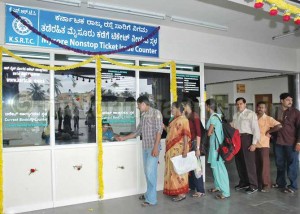
Highlight about the role of KSRTC in environmental protection and contribution towards Corporate Social Responsibility (CSR).
ISO 14000/9001 certification for the bus station, depot and workshop, occupational health and safety assessment series (OHSAS) 18001 for corporate office, water harvesting and water recycling made mandatory at depot level, massive afforestation program and alternative fuels like bio-diesel and ethanol blended diesel future projects are some under the environmental initiatives. Under CSR, concessional fares are given to girls, senior citizens, freedom fighters, differently abled persons and other special categories ; free travel to blind persons and girls studying up to 7th standard; and buses are run in smaller cities like Tumkur at affordable rates. About 30% of the conductors in premium segment are women from lower strata of society. Also we employ women in maintenance operations apart from admin functions.
Can you share your viewpoints about the future transportation in India considering the factors like rapid urbanisation, lack of road space and composite traffic?
Bus transportation offers the economical solution for a developing country like India and BRTS is a step in the right direction as both cost and completion period are lower when compared to Metro Rail solution. If the connectivity and quality of the roads improve, buses can offer better services and connect various regions for a faster and inclusive economic growth of the nation.
Impressed by the KSRTC’s good performance the centre has allotted lion’s share of buses to Karnataka under the second phase of the national urban renewal mission. With this Karnataka will have the largest and most updated fleet of public buses in the country.